#ralph dumke
Explore tagged Tumblr posts
Text

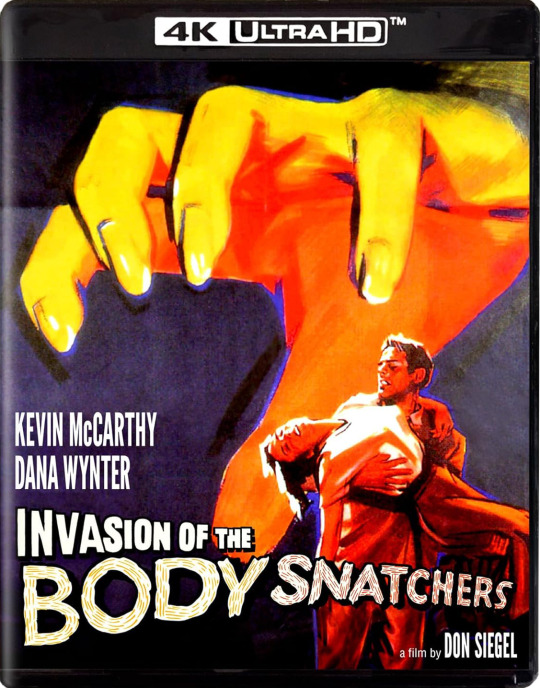
Invasion of the Body Snatchers will be released on 4K Ultra HD and Blu-ray on June 25 via Kino Lorber. The 1956 sci-fi horror classic is based on Jack Finney's novel, The Body Snatchers.
Don Siegel (Dirty Harry, Escape from Alcatraz) directs from a script by Daniel Mainwaring (Out of the Past). Kevin McCarthy and Dana Wynter star with Larry Gates, King Donovan, Carolyn Jones, Jean Willes, and Ralph Dumke.
Invasion of the Body Snatchers has been newly restored in 4K in two aspect ratios - 2.00:1 and 1.85:1 - with Dolby Vision. It features reversible artwork. Special features are listed below.
Disc 1 - 4K UHD:
Audio commentary by film historians Steve Mitchell and Nathaniel Thompson (new)
Audio commentary by film scholar Jason A. Ney (new)
Audio commentary by actors Kevin McCarthy and Dana Wynter, moderated by filmmaker Joe Dante
Audio commentary by film historian Richard Harland Smith
Disc 2 - Blu-ray:
Audio commentary by film historians Steve Mitchell and Nathaniel Thompson (new)
Audio commentary by film scholar Jason A. Ney (new)
Audio commentary by actors Kevin McCarthy and Dana Wynter, moderated by filmmaker Joe Dante
Audio commentary by film historian Richard Harland Smith
The Fear is Real - Appreciation with filmmakers Joe Dante and Larry Cohen
The Stranger in Your Lover’s Eyes – 2-part visual essay with Kristoffer Tabori, son of director Don Siegel
I No Longer Belong: The Rise and Fall of Walter Wanger – Film scholar Matthew Bernstein on producer Walter Wanger
Theatrical trailer
Invasion of the Body Snatchers (1978) theatrical trailer
Miles Bennell (Kevin McCarthy) is a doctor in a small California town whose patients are becoming increasingly overwrought, accusing their loved ones of being emotionless imposters. They're right! Plant-like extraterrestrials have invaded Earth, taking possession of humans as they sleep and replicating them in giant seed pods. Convinced that a catastrophic pandemic is imminent, Bennell, in a terrifying race for his life, must warn the world of this deadly invasion of the pod people—before it's too late!
Pre-order Invasion of the Body Snatchers.
#invasion of the body snatchers#kevin mccarthy#dana wynter#don siegel#horror#sci fi#science fiction#kino lorber#dvd#gift#50s horror#1950s horror#50s sci fi#1950s sci fi#jack finney
14 notes
·
View notes
Photo




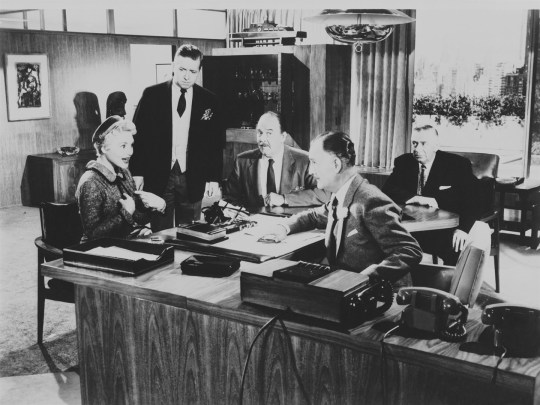


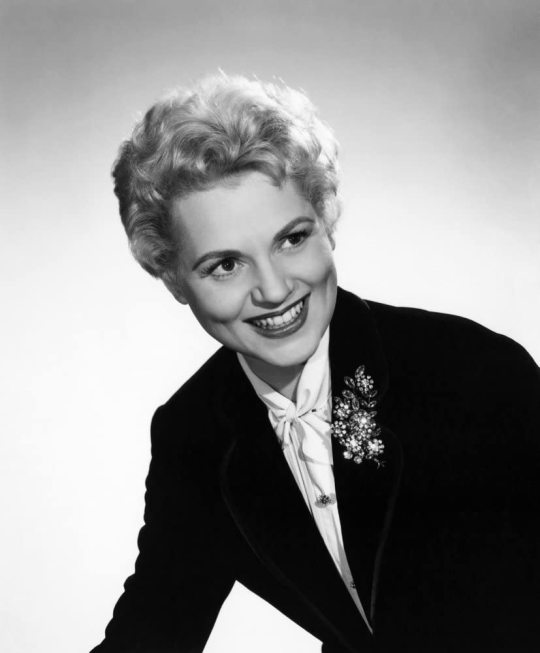
The Solid Gold Cadillac (1956) Richard Quine
September 17th 2022
#the solid gold cadillac#1956#richard quine#judy holliday#paul douglas#john williams#fred clark#neva patterson#hiram sherman#arthur o'connell#ralph dumke#ray collins#george burns#richard deacon
27 notes
·
View notes
Text

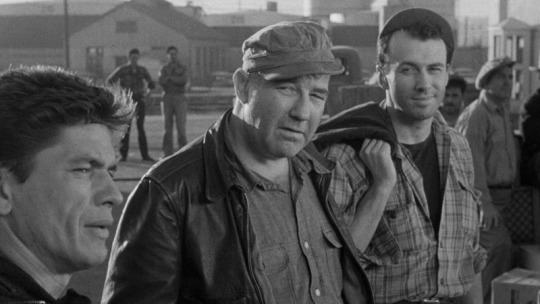
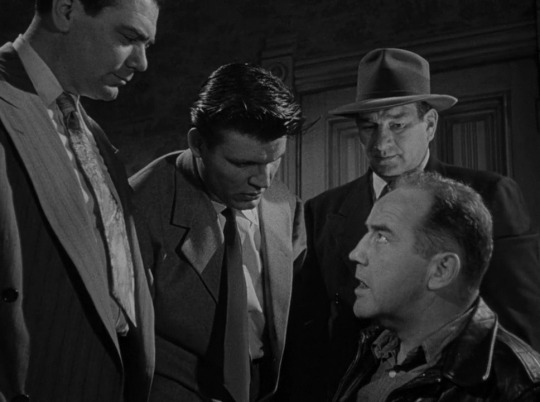
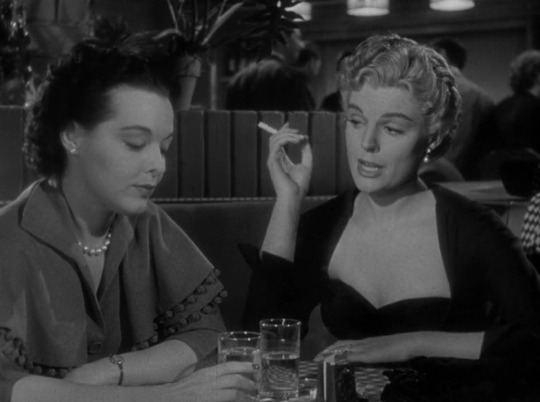


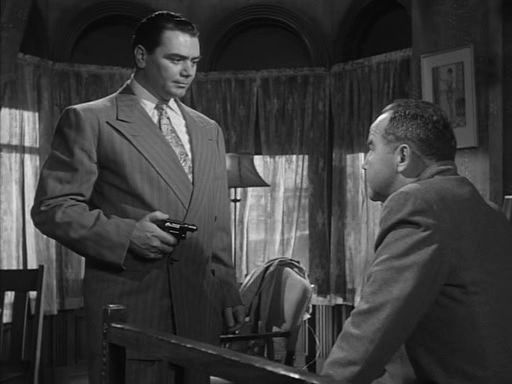
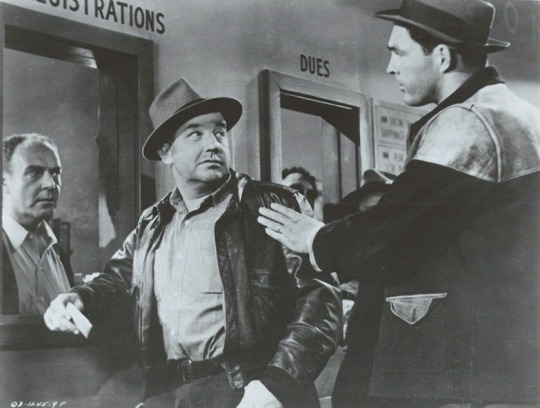
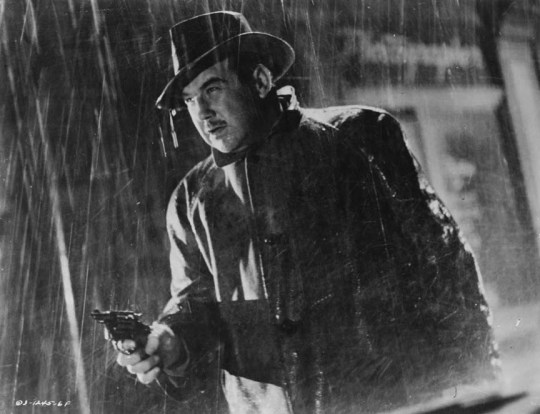
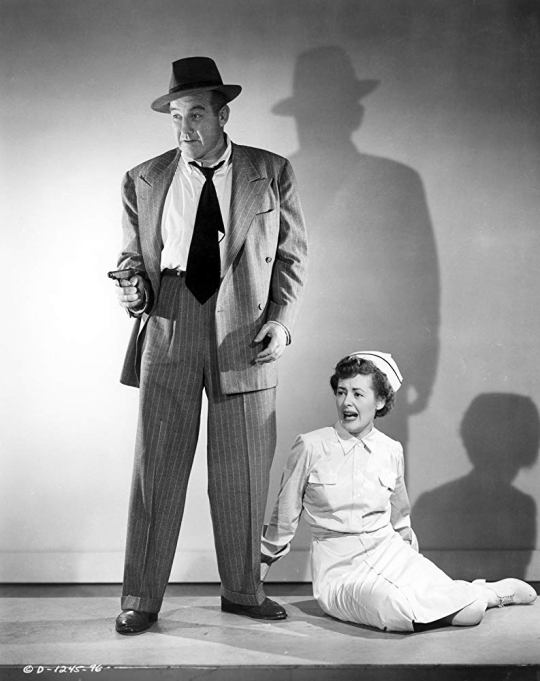
The Mob (1951)
"Want a room?"
"Nah, I just came in to admire the decorations."
"Three bucks a day."
"What's that include?"
"Sheets on the bed."
"You got a register?"
"Don't be funny."
"Here, take my stuff upstairs."
"This ain't the Waldorf, friend."
"How long d'ya work here before you found that out?"
#the mob#1951#american cinema#film noir#waterfront#Ferguson Findley#william bowers#robert parrish#broderick crawford#betty buehler#richard kiley#otto hulett#matt crowley#neville brand#ernest borgnine#walter klavun#lynn baggett#jean alexander#ralph dumke#john marley#jay adler#george duning#breathlessly paced undercover cop noir; begins with a beautifully staged shooting on a rain drenched night and never really lets up from#there. old hand Broderick Crawford is the undercover man‚ under as much pressure and scrutiny from his superiors as from the lowlives he#finds himself mingling with; it's a grim situation but Crawford is notably more jocular and wisecracking here than in other#films I've seen him in. of interest as an early role for Borgnine and for a blink and you'll miss it appearance by a very young Charles#Bronson as a surly dockworker‚ but the real winner here is the script. consistently punchy and packed with sparkling‚ witty dialogue#and darkly sarcastic put downs. the plot is really a bit of old hokum and the very ending is a little too trite or maybe overly convenient#but it's easy to overlook these shortcomings for the simple joy of Broderick getting into character as a hoodlum and immediately being#the world's biggest douchebag to literally everybody he meets for the remainder of the film
7 notes
·
View notes
Text
EAGLE-RKO PERSONALITY POLL
March 6 & 7, 1937
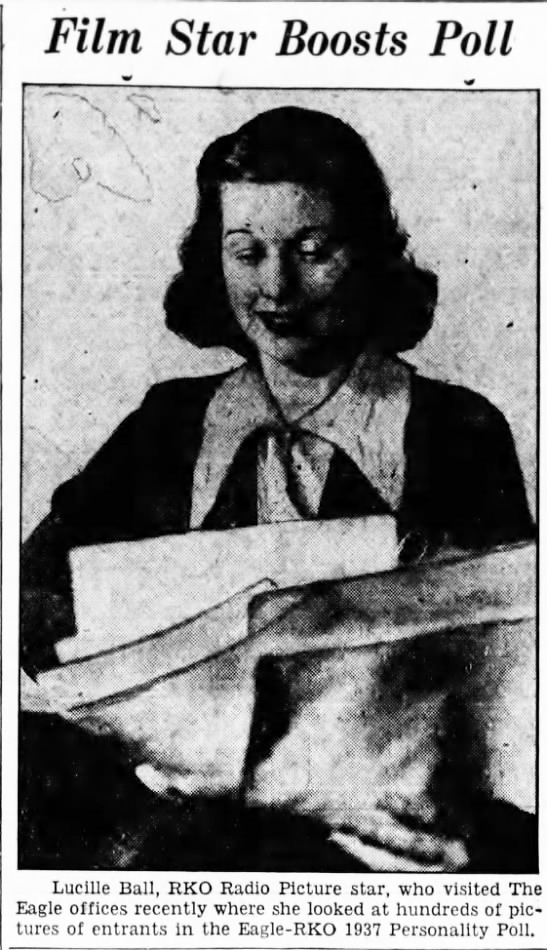

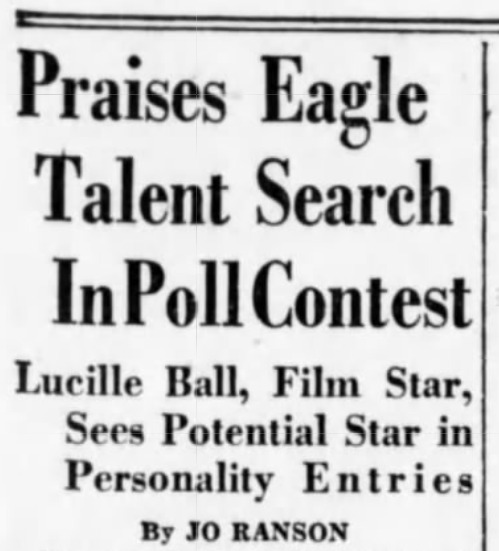
The Personality Poll Editor's office was considerably atwitter the other day when a real movie celebrity, in the person of Lucille Ball, RKO Radio Picture star, was ushered in.
Miss Ball had gladly consented to come over the Brooklyn Bridge to examine some of the pictures of recent entrants In the Eagle-RKO Personality Poll which is open to any girl over 16 years of age who resides in Brooklyn or Long Island.
"They are an attractive lot," declared Miss Ball as she studied hundreds of photographs. "And I am confident that somewhere in this group the officials will find the girl with the personality and the talent which Hollywood is constantly seeking. The Eagle guest deserves the attention of every girl with aspirations for movie fame."
Up-State Girl
Miss Ball Is a reddish blond who was born in Jamestown, N.Y., Aug. 6, 1911. She was educated in the public elementary and high schools, later studying at the Chautauqua School of Music and John Murray Anderson's dramatic school in Manhattan.
Her part in "That Girl From Paris" in which she played Lily Pons' jealous rival was her finest and best to date, although she has been prominent in "Roberta," "Top Hat," "Follow the Fleet," "Chatterbox," "I Dream Too Much," "Bunker Bean," "Farmer in the Dell" and her latest production "Don't Tell the Wife." She hopes for a role in the movie version of "Stage Door."
The nearest she ever got to a Broadway stage was at rehearsals. She really began her theatrical career in Hollywood and hopes to continue it there. She was a mannequin for Hattie Carnegie and posed for a number of prominent commercial photographers. Sam Goldwyn gave her the first break in the movies. He assigned her a role In "Roman Scandals."
Miss Ball lives in Hollywood with her grandfather, mother, younger brother and cousin.
She owns six fox terriers, five white and three white birds. The hobbies are horse back riding, swimming and tennis.
Given Style Honor
Bernard Newman, fashion stylist for RKO, picked Miss Ball as the best dressed younger player in Hollywood.
Here's a tip to young ladies In Brooklyn and Queens who have not yet entered this highly worthwhile contest. Eagle cameramen will take your picture tonight free of charge at the RKO Greenpoint Theater, 825 Manhattan Ave., Brooklyn, and at the RKO Strand, 714 Central Ave., Far Rockaway.
The photographers will be on hand at seven o'clock so do not hesitate to come in and be "snapped." The best picture for newspaper reproduction are those taken by professional newspaper photographers.
Preliminaries Monday
Preliminaries will start Monday night in the RKO Bushwick and RKO Tilyou. Each girl appearing on the stage will receive a handsome bronze medal commemorative of the occasion. Whenever possible contestants will be sent to their neighborhood RKO theaters and the audiences will have a voice in the selection of girls to be advanced to the semi-final classification.
Don't forget to purchase tomorrow's edition of The Eagle for it will contain several pages of pictures of recent entrants in the Personality Poll.
[spelling and punctuation errors have been corrected]
~MARCH 7, 1937~
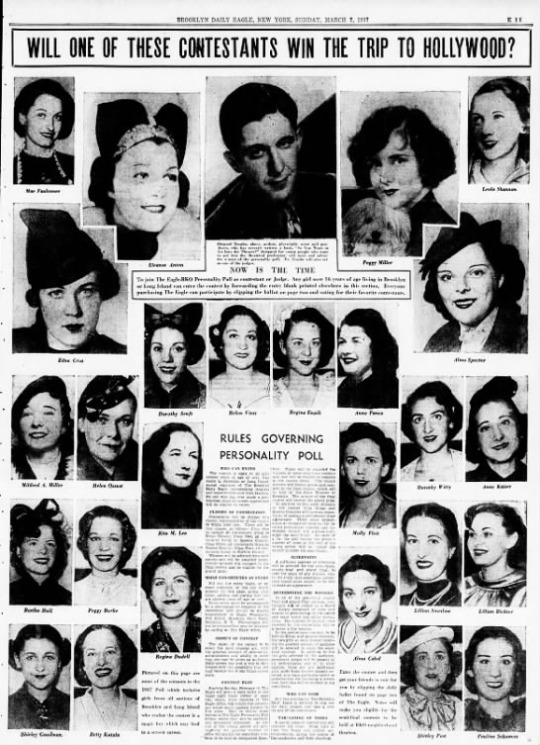
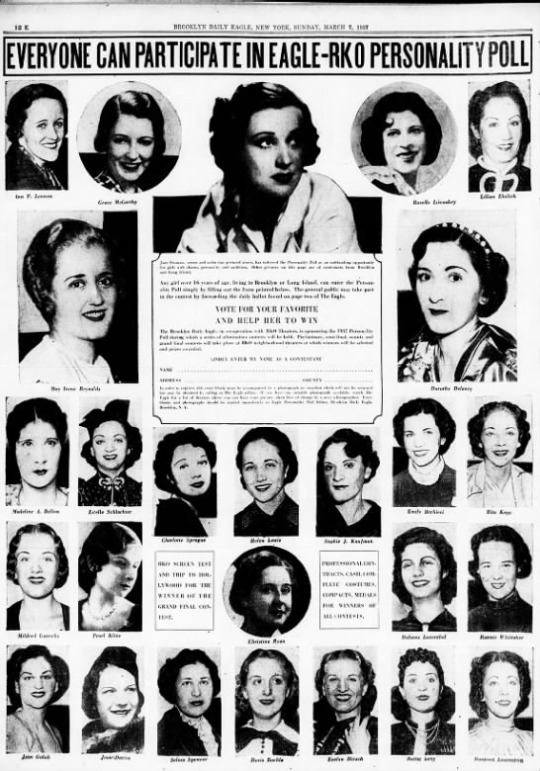
Fifty women from Brooklyn and Long Island were chosen by Lucille Ball as finalists. Playwright Shepard Traube (top center), author of “So You Want To Go Into the Theatre” will meet with and advise the winner, as well as act as one of the judges.
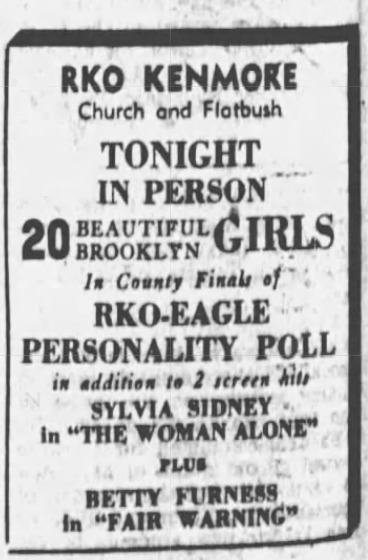
Finalists made personal appearances at their neighborhood RKO cinemas.
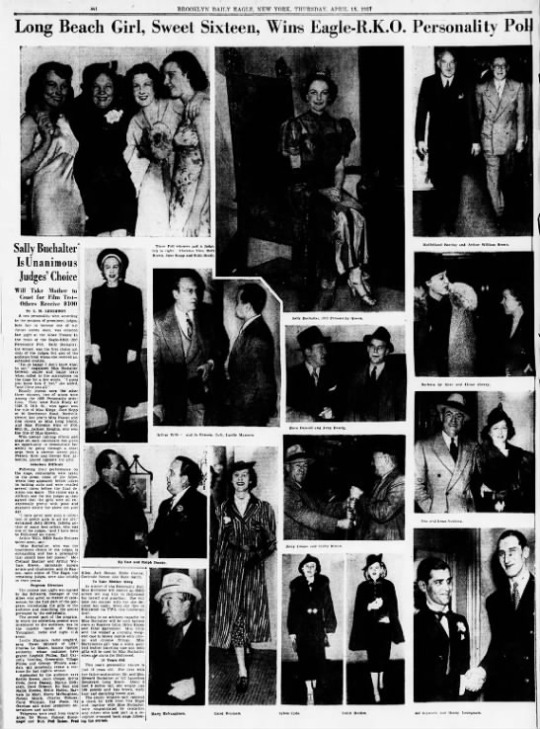
The winner, Sally Buchalter, 16, of Long Beach, was announced on April 15, 1937. The judges’ decision was unanimous. Coincidentally, in attendance at the announcement was actor Ralph Dumke, who would play Herbert, the prospective tenant looking to rent the apartment in “Lucy and Superman” (ILL S6;E13) twenty years later! Telegrams were read from such celebrities as Jack Benny, Lucille Ball’s neighbor, but oddly, no mention of Lucy, who helped narrow the field months earlier.
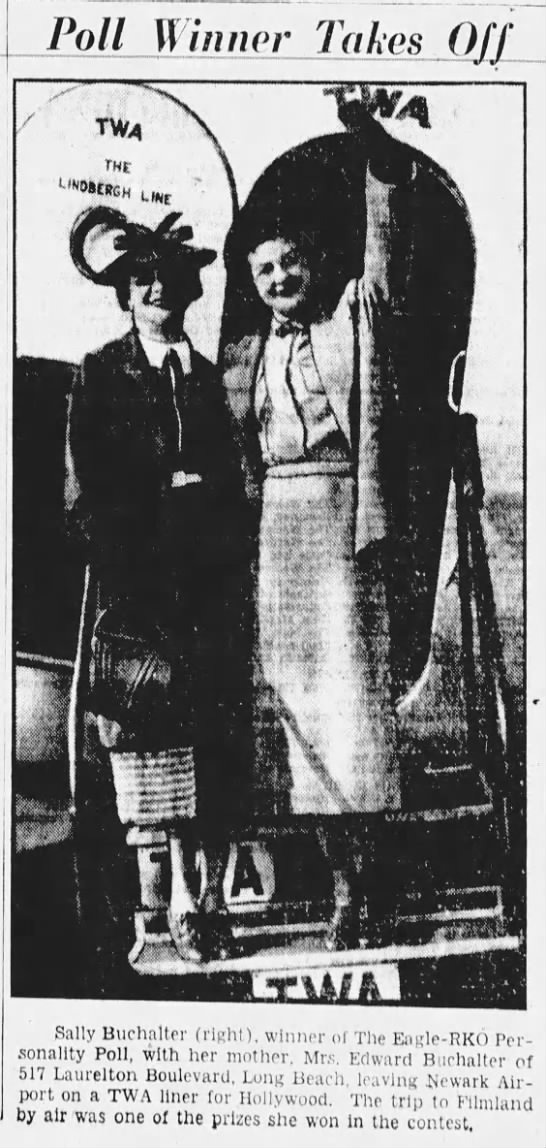
On the first of June, 1937, she was flown to Hollywood!
1 note
·
View note
Text
Dumke and East: The Mirthquakers
Dumke and East: The Mirthquakers
Today we tell of the vaudeville, radio and movie team of Ed East (1894-1952) and Ralph Dumke (1899-1964) as well as their later individual solo careers. We now have yet a couple of new entries for our long list of Hooiser comedians, humorists, and writers that includes Booth Tarkington, James Whitcomb Riley, George Ade, Robert John Wildhack, Charles Butterworth, Herb Shriner, Joe Cook, Marjorie…

View On WordPress
#Broadway#comedy team#Ed East#Mirthquakers#movies#radio#Ralph Dumke#Sisters of the Skillet#television#vaudeville
0 notes
Text

WATCHING


#invasion of the body snatchers (1956)#invasion of the body snatchers#Don Siegel#kevin mccarthy#dana wynter#Larry Gates#King Donovan#Carolyn Jones#Virginia Christine#Ralph Dumke#old films#black and white movies#horror#science fiction#scifi#alien invasion#watching#capgras delusion#mass hysteria
0 notes
Photo
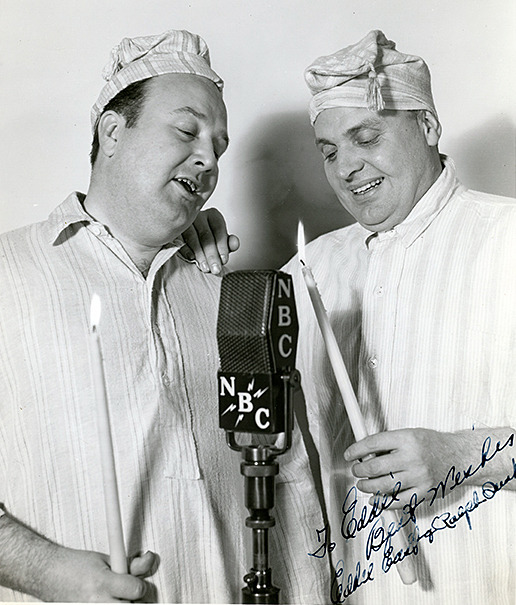
The comedy duo of Ralph Dumke (left) and Eddie East were pioneers in New York City and Chicago radio broadcasts in the late 1920s. They became national radio stars on NBC Radio from 1930-1937, hosting a daily 15-minute afternoon program, "Sisters of the Skillet.” This was a parody of radio programs for housewives, during which they performed comedy sketches, jokes, and musical numbers.
"After experimenting with several types of broadcasts, they hit on their humorous imitation of women broadcasting to women. With that their fame was assured… Their talk, wisecracks and tomfoolery are spontaneous – one of the few extemporaneous programs on the air." �� Scammon (Kansas) News-Herald, July 31, 1931
Library of American Broadcasting archives | Tumblr Archive
6 notes
·
View notes
Photo
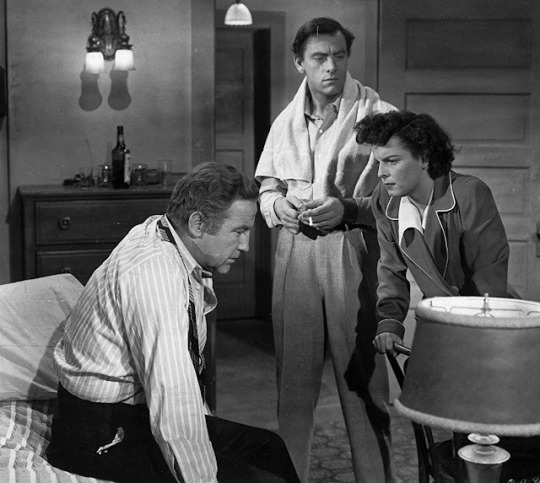
Broderick Crawford, John Ireland, and Mercedes McCambridge in All the King's Men (Robert Rossen, 1949) Cast: Broderick Crawford, John Ireland, Joanne Dru, Mercedes McCambridge, John Derek, Shepperd Strudwick, Ralph Dumke, Anne Seymour, Katherine Warren, Raymond Greenleaf, Walter Burke, Will Wright, Grandon Rhodes. Screenplay: Robert Rossen, based on a novel by Robert Penn Warren. Cinematography: Burnett Guffey, Art direction: Sturges Carne. Film editing: Al Clark, Robert Parrish. Music: Louis Gruenberg. Where psychological realism is concerned, Robert Rossen's All the King's Men plays more like a temperance lecture than a political movie. One moment Willie Stark is a naive, teetotaling reformer, faithful to his wife, and the next he's a drunken, avaricious demagogue and womanizer. All it took was a bender and a hangover, along with a little bit of disillusionment about the reason he was being promoted as a gubernatorial candidate. It's possible, however, that some of the subtlety in the characterization of Willie Stark ended up on the editing floor. The first cut of the film was notoriously overlong -- over four hours -- until it was subjected to some ruthless editing from Robert Parrish, who was called in as "editorial adviser," receiving no screen credit but rewarded with an Oscar nomination. All the King's Men is still something of a ramshackle affair in its structure and character development. While it won the best picture Oscar, it's no masterpiece. What it is, however, is a moderately good entertainment, with some effective location filming by Burnett Guffey in various California settings, and a showcase for some good performances: Broderick Crawford as Willie and Mercedes McCambridge as his factotum (and sometimes mistress, if you know how to decode the censorship runarounds) won their own Oscars, and John Ireland was nominated. But the film falls apart where it comes to politics, never quite showing how Willie managed to con the voters into their avid support while stifling and even bumping off the opposition. Instead, we get sidetracked into the relationship between Jack Burden (Ireland) and Anne Stanton (Joanne Dru), the melodramatic suicide of her uncle, and her brother's transformation into an assassin. Maybe someday we'll get a solid portrayal of populist demagoguery in the movies, whether based on Huey P. Long or Donald J. Trump, but All the King's Men isn't it.
2 notes
·
View notes
Text
The One-Eyed Moose
The One-Eyed Moose
By: Hannah Dumke
Sitting down at The Fountain, a classic Wisconsin bar just outside of Oshkosh, Wisconsin, I had the pleasure to meet Don Herman, a local legend and owner of Sunk? Dive & Ice Service over a couple of cold ones.
Last fall,
returning from a successful moose hunting trip in Ontario, Canada, Don was greeted by some Fountain regulars who were wearing eye patches, teasing him for his one-eyed moose. Don, laughing as he reminisced, explained how he had a story to tell, stating, “I can’t prove my moose was attacked by another moose, but I can prove that I didn’t shoot a one-eyed moose.” Hearing plenty of good hunting stories, I could tell this was going to be a dandy.
Don began by explaining how on his first moose hunting trip it was him, three buddies, and two bull tags. Within six hours the hunting trip was over, as two of the buddies almost instantly tagged out. The following year, Don, Bill Monteith, the owner of the camp, Ralph Schaetz, aka the butcher, and Jim Dork planned for another big adventure. Sticking with their tradition, the men stayed at a casino near the Canadian border. Don noted that they didn’t make any money but they did have a lot of fun they felt the next day. Planning to wake up at the crack of dawn to continue their thirteen-hour drive they were awakened by Jim nervously stating Ralph was having severe chest pains. Calling an ambulance, Ralph who had the second bull tag in his name, was medically advised to abandon the trip. The rest of the men continued on their journey, assuming they could change the tag into Don’s name. Arriving at Wilderness North, the men took a float plane to Lake Deshawn, a beautiful lake filled with massive walleye and monstrous northerns. Don loaded his canoe with gear and paddled an hour and a half to the stand he barely had the pleasure of sitting in the previous year because everyone filled their tags so quickly. The stand was nestled in tall brush, overlooking a river that wound its way into the thick Canadian wilderness.
Hunting a total of three hours, Don got a radio call informing him that Bill got a moose. Don thought, “Well, that was that, another short moose hunt.” Paddling the hour and a half back to the cabin, Don helped Bill take care of his moose. After several hours of butchering up the moose and waiting for the plane to bring their new tag, the group of men were informed that the department of ministers were unable to switch their second tag into Don’s name. Disappointed in the unfortunate circumstances, the group of men ended their seven-day trip four days early. A couple weeks later,Don got a call from Bill, stating Ralph was medically cleared to go, and he was ready to pack up and head out for another Canadian adventure. Not so easily convinced, Don found himself in a routine becoming quite familiar, a thirteen-hour drive, a drunken casino visit, a breathtaking float plane ride and an hour and a half paddle back to his stand.
Taking a sip of his beverage, Don chuckled, pausing his story to show us a video on his phone. In the video you see Don dressed in camo up in his stand, talking loudly over the howling wind, “It’s windy, cold, and miserable out here. Luckily the moose can’t go anywhere, it’s not like they can find a shelter. So I guess we will see… Either way, it’s going to be a BAD day hunting.” Luckily for Don, it wasn’t such a bad day hunting. Continuing the story, Don explained how he was calling every fifteen to twenty minutes. Around noon, over the roaring wind, Don heard rustling about 200 yards from his stand and the bull aggressively calling back. At first questioning if this was his imagination or was this actually a moose? With his hands shaking in excitement, Don continued to call. After about thirty minutes, a large rack emerged.
The moose,
was now 100 yards away, Don continued to call, hoping to coax him into a better shot. The moose moved another few yards closer to the river, still shaking in disbelief and thinking, “Was this really happening?” Hearing Bill’s voice in his mind telling him to aim at the hump, Don aimed his Browning Bar 300 Winchester Mag at this magnificent creature and pulled the trigger. Click. “Nooooooo” Instantly recognizing the problem, he realized when he quietly loaded his gun he didn’t allow the action to slam home hard enough to secure the shell properly. Don ejected his shell, and as it hit the floor, it rolled across the bottom of his stand making a tremendous racket. He jacked another shell in, tried to calm himself, aimed, and with perfect precision, pulled the trigger. Over 60 hours of driving, 7 and a half hours of paddling and less than 20 hours in the stand, Don had finally gotten his first moose!
Don left his stand, hobbled across the ankle twisting, knee busting treacherous terrain to examine his bull. He excitedly took a photo of this 1500-pound trophy. Don, still filled with adrenaline, aggressively paddled the hour and half back to the cabin to pick up the butchering gear, grab Billy and get a boat to haul out his moose. After three and a half hours, they finally returned to Don’s stand. Billy, who has been moose hunting for the past 39 years, stated how he thought this was the biggest shot Deshawn Lake has seen. Billy was unable to hide how impressed he was, that is until he saw the missing eye and couldn’t believe how this wounded bull came to a call. Bursting out laughing Billy mockingly called out, “You shot a one-eyed moose!” Regardless, the 50-inch rack was too massive to deny, Billy convinced Don to get the beast mounted. Laughing, Don told us the mount cost more than the entire trip!
Don returned home, though he was excited about his first moose he was still unable to live down that he killed a one-eyed moose. Don explained it wasn’t until two weeks after the trip when he was going through his photos that he realized his one-eyed moose wasn’t always a one-eyed moose. In disbelief, he zoomed in on the photos examining the moose’s eye right and saw it was undamaged. Sure enough, the moose had lost his eye sometime when Don left to go get Bill and the gear. Confirming his suspicion, Don called the taxidermist who was mounting the moose head. The taxidermist noted how when Don had dropped off the moose he noticed how the eye and several other puncture wounds looked extremely fresh. They hypothesized that while Don was at the cabin his moose was attacked by another moose. As Don finished his story, he was proud to exclaim that he, in fact, did NOT shoot a one eyed moose. However, in honor of the wild adventure and humorous memory, Don shared he had requested for the moose to be mounted with only one eye.
The post The One-Eyed Moose appeared first on Morning Moss.
from Morning Moss http://morningmoss.com/the-one-eyed-moose/
0 notes
Text
OUT OF THE 'RAIN’
June 15, 1944

In his Behind the Scenes: Hollywood column on June 15, 1944, Harrison Carroll reported that Lucille Ball was close to signing to play the lead in the Broadway musical based on the play Rain.
The play version of Rain was written by John Colton and Clemence Randolph, based on the short story “Sadie Thompson” by W. Somerset Maugham. It opened on Broadway in November 1922. It took the summer of 1924 off and re-opened at another theatre racking up more than 700 performances. There were Broadway revivals in 1926 and 1935.

The first actress to play Sadie Thompson in 1922 (as well as in the 1926 revival) was Jeanne Eagels, a former Ziegfeld Girl. Eagels went on to great fame on Broadway and in the emerging medium of sound films. She posthumously was nominated for an Academy Award after dying suddenly in 1929 at the age of 39.

The 1935 revival featured Tallulah Bankhead as Sadie Thompson. Bankhead teamed with Lucille Ball in a December 1957 episode of “The Lucy-Desi Comedy Hour” and was mentioned on “I Love Lucy.”

Rain is one of the titles of plays and films that Ethel Mae blurts out when she is serving dinner at the Ricardos.

When Rain was filmed in 1932, the prized role of Sadie Thompson went to Joan Crawford.

Crawford teamed with Lucille Ball in a 1968 episode of “The Lucy Show” and was twice mentioned on “I Love Lucy.”

Prior to that there was another adaptation of the Maugham short story, the 1928 silent film Sadie Thompson, starring Gloria Swanson. This version featured Charles Lane, who often appeared on “I Love Lucy” and “The Lucy Show.” Swanson and Lucille Ball both appeared in the 1960 special “Hedda Hopper’s Hollywood.” Coincidentally, Swanson was intended to star on “The Lucy Show” in the episode that eventually featured Joan Crawford.

In 1946, just two years after this news item was published, the story was used as the basis for an all-black version titled Dirty Gertie from Harlem USA. Francine Everett played the lead. Francine appeared in the most important films of Black Cinema.

Unfortunately, for whatever reasons, Lucille Ball did not play Sadie Thompson in the musical version of Rain, although the project forged ahead without her. It was titled Sadie Thompson, and featured music by Vernon Duke and lyrics by Howard Dietz. Billed as a ‘play with music’ it opened on Broadway at the Alvin Theatre on November 16, 1944, and ran for 60 performances, closing on January 6, 1945.

Ethel Merman was originally cast to play the role of Sadie Thompson. On September 29, 1944, a week and a half into rehearsals, she withdrew from the production. The role of went to June Havoc. Broadway lovers may remember that she was later the inspiration for Gypsy Rose Lee’s sister, Baby June, in the 1959 musical Gypsy, which would star... Ethel Merman. Ralph Dumke (the husband of the nervous new tenant in “Lucy and Superman”) was in the ensemble of Sadie Thompson. Also in the cast was John (aka Jack) Cassidy, who would become a big Broadway star and even appear on a 1965 episode of “The Lucy Show” with a Hello, Dolly / spy theme.

In 1953, when Lucille Ball was already two years into “I Love Lucy,” Rita Hayworth took on the character in the feature film remake Miss Sadie Thompson. Robert Osborne, a protégé of Lucille Ball’s and the host of Turner Classic Movies, considered Hayworth to be "the definitive" Sadie Thompson. The film was initially released in 3-D! It inserted several of the songs from the failed Broadway musical.

It is no wonder that the character of Sadie had allure for Lucille Ball. She thought herself every bit as good a dramatic actress as Bankhead, Swanson, and Crawford. She was also continually looking for a vehicle to bring her back to Broadway, a venue denied her in her early career. Coincidentally, when she finally got to Broadway in a new musical also based on a hit play, it would be at the very same theatre that had briefly hosted Sadie Thompson. Lucy would just have to wait sixteen years to occupy the Alvin’s star dressing room, finally on the marquee in December 1960 with Wildcat.

In 1997, the story was turned into an opera by Richard Owen. It was produced in New York City in 2003 and recorded.

Sadie Thompson was not the only musical version of Rain. In 2016, the Old Globe Theatre in San Diego premiered a new musical version adapted by Sybille Pearson with music and lyrics by Michael John LaChiusa. It starred Broadway powerhouse Eden Espinosa as Sadie Thompson.

So what kept Lucille Ball from playing the role? Perhaps she decided (like Merman) that the script or score were not good enough? We already know that she was not a confident singer and was often dubbed in films. Perhaps despite the allure, she was just not ready to play a gritty prostitute? Or it might have been pressing radio and film commitments that kept her on the West Coast. Broadway runs are generally a six month commitment. We will never know for sure. But it sure would have been fascinating!
3 notes
·
View notes
Photo

John Garfield and Patricia Neal in The Breaking Point (Michael Curtiz, 1950) Cast: John Garfield, Patricia Neal, Phyllis Thaxter, Juano Hernandez, Wallace Ford, Edmon Ryan, Ralph Dumke, Guy Thomajan, William Campbell, Sherry Jackson, Donna Jo Boyce, Victor Sen Young. Screenplay: Ranald MacDougall, based on a novel by Ernest Hemingway. Cinematography: Ted D. McCord. Art direction: Edward Carrere. Film editing: Alan Crosland Jr. Music: Max Steiner. If the setup, an honest fishing-boat captain forced into some intrigue he really doesn't want to get mixed up in, sounds familiar, that's because The Breaking Point was based on Ernest Hemingway's To Have and Have Not. And that had been the basis in 1944 for a much looser adaptation (it mostly just kept the setup and the title) directed by Howard Hawks, with the aid of screenwriters Jules Furthman and William Faulkner. But here, instead of Humphrey Bogart and Lauren Bacall, we get John Garfield and Patricia Neal -- considerable actors both, but striking no sparks and teaching no one how to whistle. The New York Times's ineffable film critic Bosley Crowther much preferred The Breaking Point, calling the Hawks version a "feeble swing and a cut at Ernest Hemingway's memorable story of a tough guy" whereas director Michael Curtiz and screenwriter Ranald MacDougall "got hold of that fable and socked it into a four-base hit." Crowther's baseball metaphors aside, it's possible to admire the professionalism of Curtiz and his cast, and to approve of MacDougall's adherence to the novel's downer ending for Garfield's character, while still feeling that in their film Hawks, Furthman, Faulkner, Bogart, Bacall, et al. displayed a lot more about the Hemingway virtue of grace under pressure.
0 notes
Text
MADGE BLAKE
May 31, 1899 - February 19, 1969

Madge Blake (née Cummings) was best remembered for her roles as Margaret Mondello on “Leave It to Beaver”, Flora MacMichael on “The Real McCoys,” and Aunt Harriet Cooper on “Batman”. Born in Kansas just before the turn of the last century, her father discouraged her from becoming an actress, so she did not enter acting until later in life. During World War II, Blake and her husband James Lincoln Blake worked on construction of the detonator for the atomic bomb and received a citation for their work from the U.S. government.
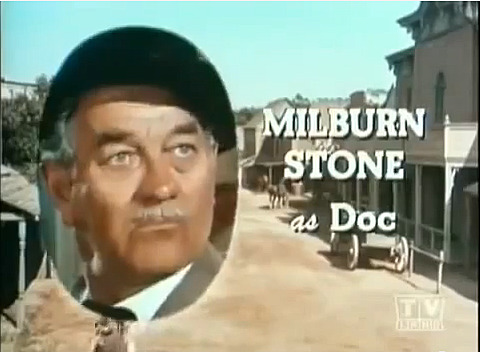
Blake’s first cousin was actor Milburn Stone (”Gunsmoke”). They both acted in the 1955 film The Private War of Major Benson starring Chaleton Heston and Sal Mineo.

Gene Kelly had a special affection for her and included her in each of his films including An American in Paris, Brigadoon, and Singing in the Rain as Dora Bailey (above).

Her first collaboration with Lucy and Desi was as Aunt Anastasia in The Long, Long Trailer, which premiered in February 1954.

A month later she was seen as Mrs. Mulford (of Jeri’s Hats), on “I Love Lucy” in “Ricky Loses His Temper” (ILL S3;E19). A sly salesperson, Mrs. Mulford entices Lucy to buy a new hat, despite her promise to Ricky that she wouldn’t.
MRS. MULFORD: “It’s half price!” LUCY: “I’ll take it!”
Technically, The Long, Long Trailer was filmed first, so the movie was her introduction to Lucille Ball and probably resulted in this series appearance.

In January 1957, she played Martha, a prospective new tenant at 623 East 68th Street who is afraid of heights, alongside her caring husband Herbert (Ralph Dumke), in “Lucy and Superman” (ILL S6;E13). Imagine her shock when she spies Lucy dressed as Superman perched on the ledge!
HERBERT: “Was it a bird?” MARTHA: “No.” HERBERT: “Was it a plane?” MARTHA: “No.” HERBERT: “Well, what was it, dear?” MARTHA: “It was Superman!”
It is somewhat coincidental that Blake should star with TV’s Superman (George Reeves), nearly ten years before being cast in TV’s “Batman.” Just as coincidentally, Blake and Dumke both appeared in The Solid Gold Cadillac (1956) and Loving You (1957).
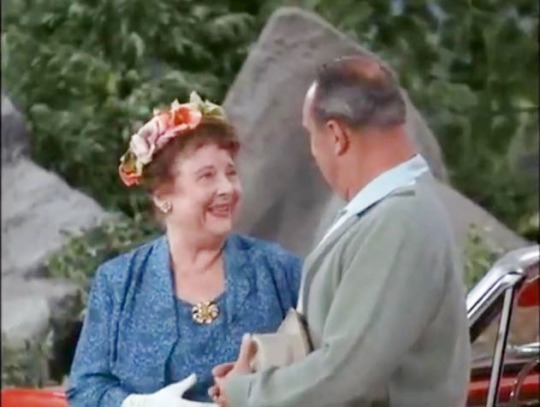
Her final appearance with Lucille Ball was on a 1964 episode of “The Lucy Show”, “Lucy, the Camp Cook” (TLS S3;E6). Blake plays a motorist who stops to help a stranded Mr. Mooney. Lucy and Viv are hiding just out of sight. Clearly, she has no idea that she is helping out two women as well as the handsome banker.
DRIVER (flirty): “Let me go in first and dust the seat...big boy!”
THE DESILU CONNECTIONS
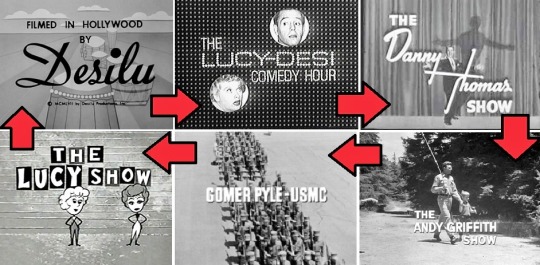
Desilu’s many television shows often blurred the lines; characters being spun-off, or crossing over to another show. Madge Blake’s characters existed in several TV worlds, although she may not have appeared in the actual cross-over episodes.

For example, Blake made two appearances on the Ann Sothern sitcom “Private Secretary” both times playing Mrs. Bernard Hugo - once in 1953, and again in 1956. During 1957, Sothern’s character Susie MacNamara appeared as Lucy Ricardo’s friend in the first “Lucy-Desi Comedy Hour” titled “Lucy Takes a Cruise to Havana” (LDCH S1;E1).

After her first appearance on “I Love Lucy” Blake was cast as Anita Henderson on the CBS / Desilu series “December Bridge,” a role she played in 1955 and 1956. She did one more episode in 1957 as Margaret. The show featured many actors who also appeared on “I Love Lucy.” In 1957, Executive Producer Desi Arnaz appeared as himself.

In another cross-over connection, Blake made four appearances on “The Danny Thomas Show” from 1954 to 1961, each time playing a different character. In 1958, to symbolize the show’s move to CBS, the Williams family moved into the Ricardo home in Westport. In return, Lucy and Desi guest-starred on “The Danny Thomas Show” as the Ricardos.
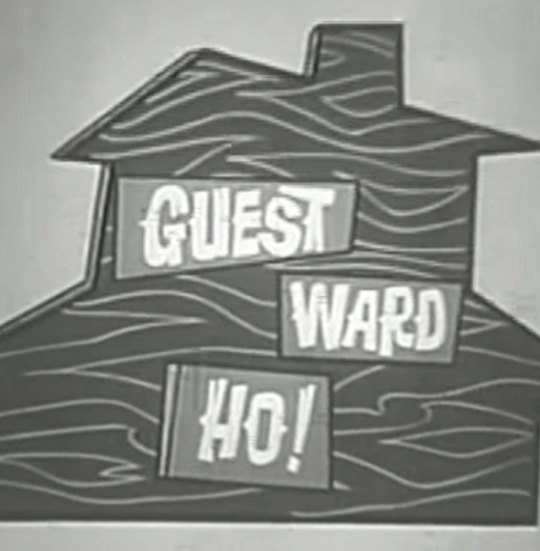
On February 9, 1961, Blake did a guest-spot on the short-lived CBS Desilu series “Guestward, Ho!” Ironically, the leading role was originally intended for Vivian Vance, but the network thought her too associated with Ethel Mertz.
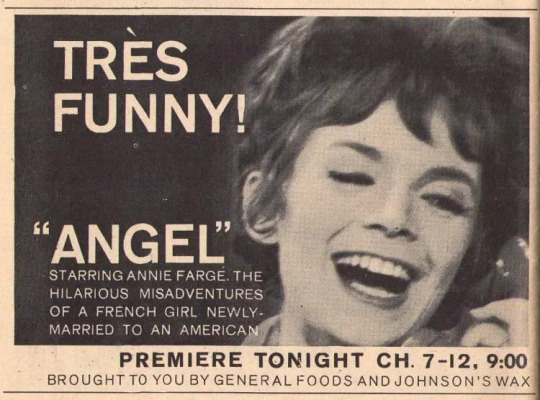
That same evening, February 9, 1961, Blake also did a guest-spot on the ABC series “Angel” which was filmed on the Desilu lot. She acted opposite Doris Singleton, who had played Carolyn Appleby in “Lucy Meets Superman,” although the two did not share any scenes. The one-season series was created by Jess Oppenheimer, writer of “I Love Lucy.”

In 1963 and 1965, Blake joined the cast of “The Dick Van Dyke Show” which filmed on the Desilu Lot.
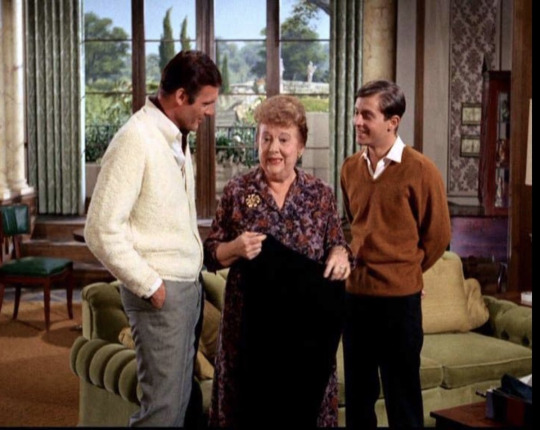
In 1966, she was cast as Aunt Harriet Cooper on “Batman”, a role she played for 96 episodes and in a 1966 feature film that also had the same cast. She became good friends with star Adam West (Bruce Wayne / Batman). When producers wanted to let Blake go, West intervened and she stayed with the show until illness reduced her ability to work. On the series, Blake worked with many of the same actors who appeared with Lucille Ball: Cesar Romero, Van Johnson, Shelley Winters, Liberace, Tallulah Bankhead, Ethel Merman. Milton Berle. Rudy Vallee, Ida Lupino, Howard Duff, Stafford Repp, Victor Buono, Vincent Price, Edward Everett Horton, Vito Scotti, Norma Varden, Tristram Coffin, Ellen Corby, Sammy Davis Jr., Allen Jenkins, Art Linkletter, Alan Hale Jr., Jessyln Fax, and Alberto Morin.
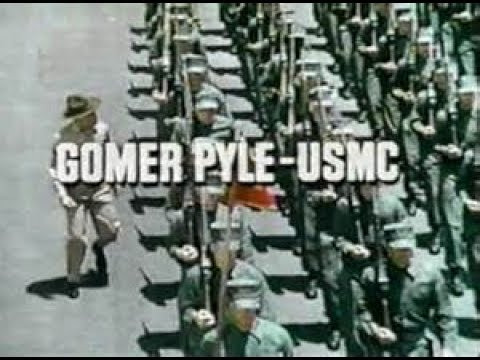
In 1967, Blake did a single episode of “Gomer Pyle USMC” (a spin-off of “The Andy Griffith Show”). A year earlier, Gomer Pyle (Jim Nabors) made a cameo appearances on “The Lucy Show” (TLS S5;E9) in which Lucy Carmichael is mistaken for Lou C. Carmichael and drafted!

Blake’s final appearance was a 1970 TV movie “The Shameful Secrets of Hastings Corner” produced by Harry Ackerman, who was a CBS executive who worked on (and appeared on) “I Love Lucy.” It was aired posthumously as Blake died in February 1969 at the age of 69.
#Madge Blake#Batman#I Love Lucy#Lucille Ball#Vivian Vance#The Lucy Show#Angel#Gomer Pyle USMC#The Dick Van Dyke Show#Gunsmoke#Milburn Stone#Jess Oppenheimer#Guestward Ho#December Bride#Ann Sothern#Private Secretary#The Danny Thomas Show#The Lucy-Desi Comedy Hour#Danny Thomas#Dick Van Dyke#adam we#Burt Ward#Gale Gordon#Ralph Dumke#Superman#The Long Long Trailer#Singing in the Rain#Gene Kelly#TV#Film
7 notes
·
View notes
Text
Watch The Mississippi Gambler Film
The Mississippi Gambler movie download
Actors:
John McIntire Ralph Dumke Tyrone Power Paul Cavanagh Piper Laurie John Baer Ron Randell Julie Adams
Download The Mississippi Gambler
Stars Tyrone Power, Piper Laurie, John McIntire. Francis. The Mississippi Gambler | Moviefone - Movies | Movie Times. 1953's The Mississippi Gambler was the third Universal Studios film to bear this title--though with a different. His first success makes enemies of the crooked gamblers and of fair. The Mississippi Gambler: Information from Answers.com Plot 1953's The Mississippi Gambler was the third Universal Studios film to bear this title--though with a different plot each time. The Mississippi Gambler (1953) - IMDb Mark Fallon, with partner Kansas John Polly, tries to introduce honest gambling on the riverboats. The Mississippi Gambler (1953) New Movie Trailer, Review, Photos. Tyrone Power plays an all-around. Schildkraut is cast as ruthless. . The Mississippi Gambler (1953) - Overview - MSN Movies 1953's The Mississippi Gambler was the third Universal Studios film to bear this title--though with a different plot each time. The Mississippi Gambler - Wikipedia, the free encyclopedia The Mississippi Gambler is a 1929 film made by Universal Pictures, directed by Reginald Barker, and starring by Joseph Schildkraut and Joan Bennett. Actors: Joseph Schildkraut: Jack Morgan Joan Bennett: Lucy Blackburn Carmelita Geraghty: Suzette Richards Alec B. Tyrone Power plays an all-around. Starring Tyrone Power, Piper Laurie, Julie Adams
Time After Time download
#The Mississippi Gambler#John McIntire#Ralph Dumke#Tyrone Power#Paul Cavanagh#Piper Laurie#John Baer#Ron Randell#Julie Adams
0 notes